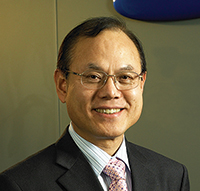The Challenges and Opportunities of Large OLED TVs

by Ho-Kyoon Chung
OLED TVs were the talk of the Consumer Electronics Show in 2012, and this year’s CES featured attention-getting OLED televisions as well: 55-in. curved OLED
TVs from Samsung Display and LG Display and a 56-in. 4K OLED TV from Sony and Panasonic. These were impressive demonstrations, and it was encouraging to see more
players, such as Sony and Panasonic, coming into the game. However, there are customers anxiously waiting to buy these TVs at affordable prices. And what happened to earlier promises that large OLED TVs would be in production by the second half of 2012?
It is difficult to tell exactly what’s happening at each company and what its future future plans are in terms of investment and production volume. Obviously, manufacturing challenges remain, especially for high yields. Another challenge is how, from a marketing perspective, to differentiate OLED TV
from the LED-backlit LCD TV, which has excellent picture quality and is becoming ever thinner.
Challenges of Manufacturing OLED TVs
It is interesting to note that the two leading OLED-TV companies, Samsung Display and LG Display, have taken different approaches to TFT backplanes as well as to OLED RGB color patterning. The details of the technology are described in the articles, “Oxide TFTs for AMOLED TVs” by Jin-Seong Park and “RGB Color Pattering in AMOLED TVs” by Jang Hyuk Kwon in this issue of Information Display.
You may ask why each company chose their different path and which one will be the winner. In my opinion, one company has chosen an approach that is an extension of a well-established process for small-OLED mobile displays, and the other has chosen a cost-effective and relatively easy approach to manufacturing large OLED TVs – even though it has not been fully proven for mass production. It is probably too early to tell which one will be the eventual winner.
However, considering the recent success of LED-backlit LCD TVs, the manufacturing process for OLED TVs must meet the following requirements in order to compete with these incumbents. First, the cost of manufacturing must be lower than (or at least equivalent to) the cost of LCD TVs because most consumers will not pay a high premium just for the sake of owning an OLED TV. In order to reduce the cost, the first priority of OLED R&D should be the development of processes and equipment that use the entire motherglass without cutting, from TFT to OLED fabrication. Second, the manufacturing process should be readily extendable to ultra-high-resolution
TVs. This requirement necessitates careful consideration when choosing the TFT-array technology and OLED color-patterning method. In order to drive as many as 24 million subpixels for 4K TV; for example, not only the TFT but the metallization process must be developed to meet the requirements. Also, the color patterning must have the scalability to handle the subpixel resolution down to ~100 µm in large substrates, and the top emission structure needs to be developed for large OLED panels.
Future Outlook of OLED TV
There is good news regarding OLED TV in that people now see the potential of large OLED TV as the ultimate television — something they want to have in their living room. As far as a consumer transition from LED-backlit LCDs to OLED TVs is concerned, there are two schools of thought; it will be abrupt or gradual. Those who support the idea of abrupt transition are the optimists who believe that the current manufacturing issues will be solved within 2–3 years, as many companies shift to OLED-TV manufacturing. The gradual transition scenario stems from the consideration that the LCD TV will continue to lead the market because it will take more than 2–3 years for OLED TV to establish a manufacturing technology with both low cost and high yield. Besides, the LCD-TV infrastructures have already been well established. In my opinion, the entry of OLED TV into the marketplace will be driven by the marketing strategy of TV-set makers more than by the economy in the early phase, and the transition could be swift because I believe the learning curve for large-OLED-panel manufacturing will be quicker than that for the small mobile display.
Ho-Kyoon Chung led Samsung’s OLED R&D for over 10 years and is now Chair Professor at Sungkyunkwan University after retirement from Samsung. He is still continuing his research on core-technology development for flexible AMOLED and OLED lighting on flexible substrates. He is a Fellow of SID and can be reached at hokyoonc@gmail.com